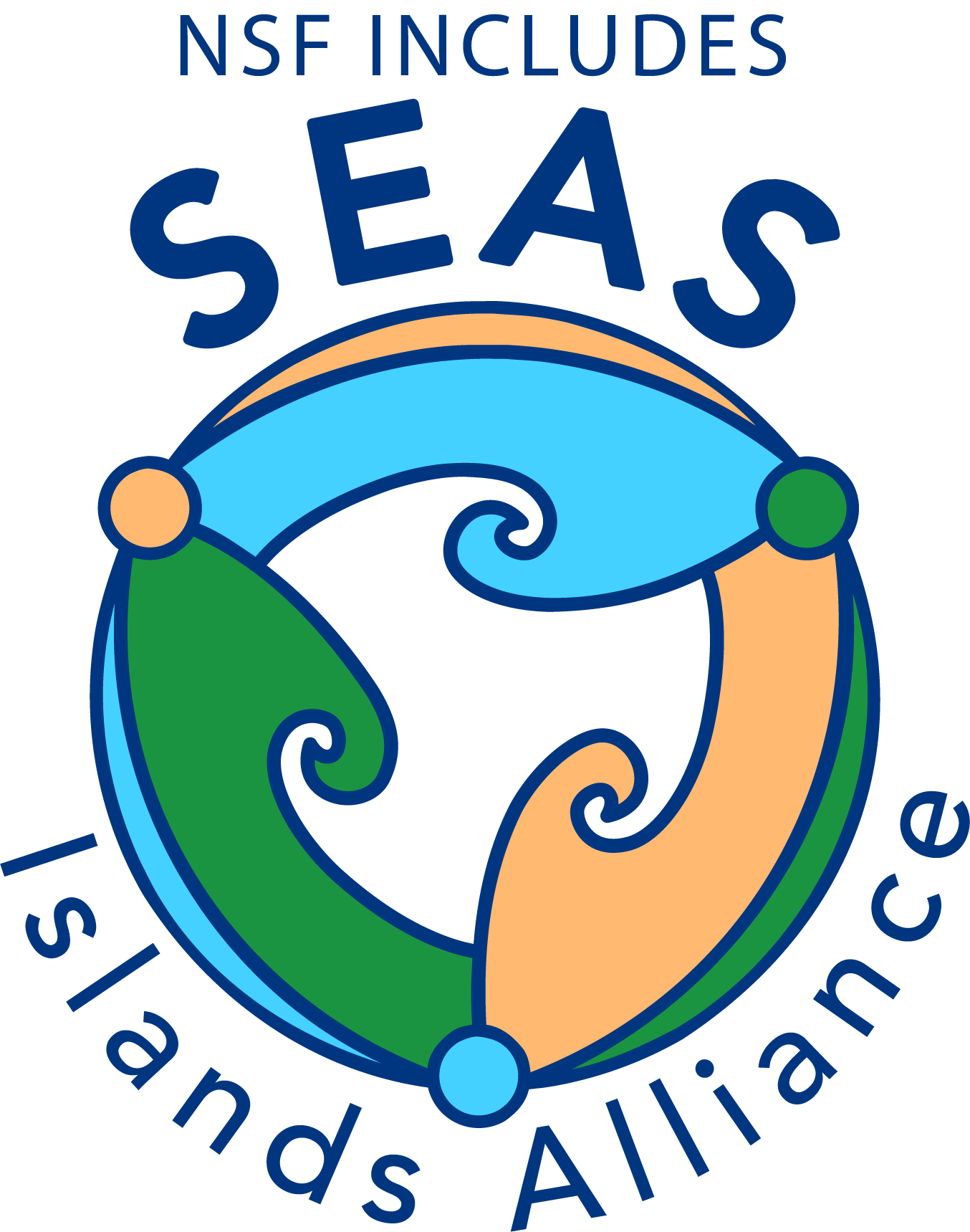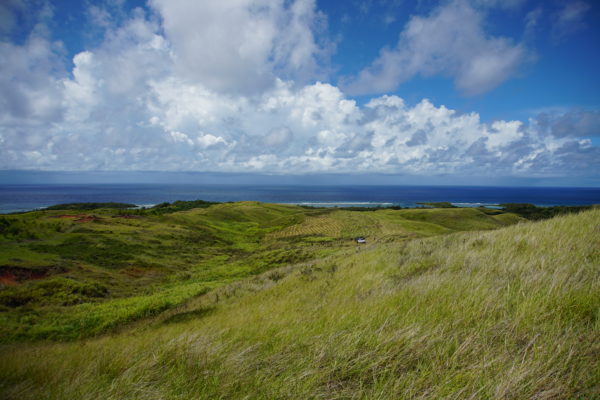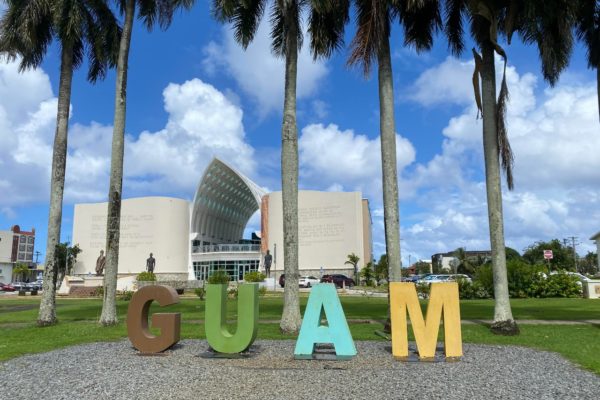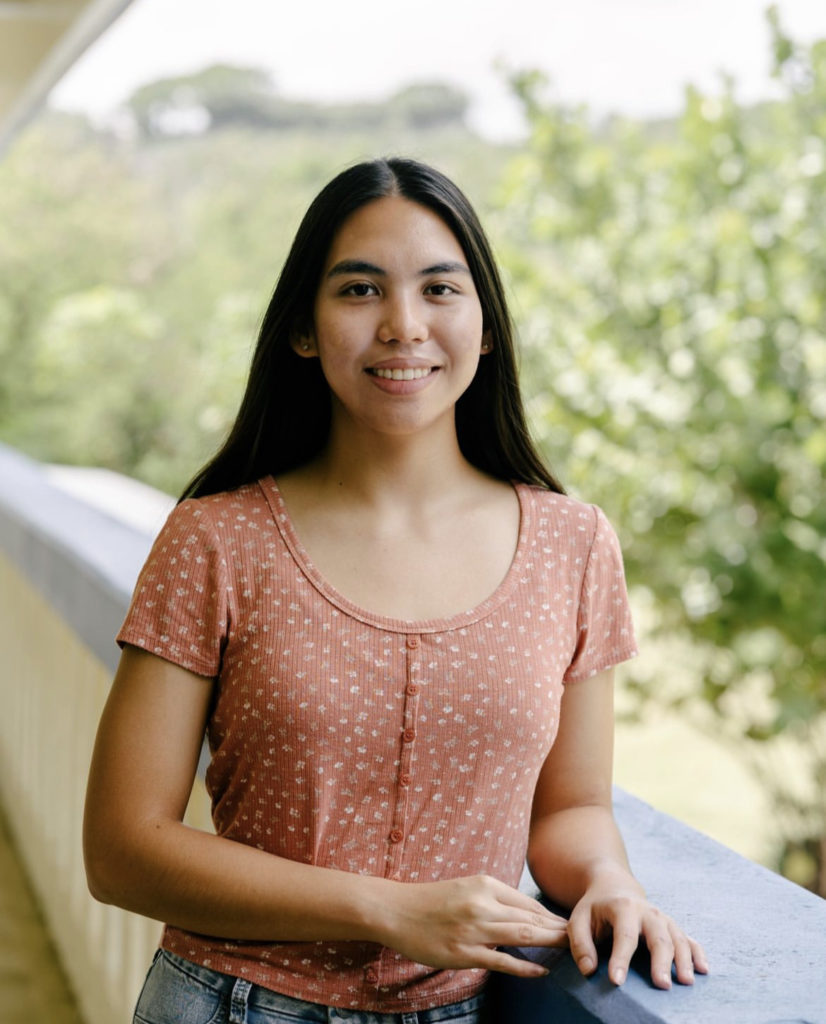
Photo courtesy of Matthew Miguel, University of Guam
Meet Rebecca Salas, an undergraduate student with the Guam hub of the SEAS Islands Alliance. Salas is a sophomore at the University of Guam, where she’s studying integrative biology.
Tell me about your research project.
I study light-induced changes within the behavior and photosymbiosis of Cassiopea, the upside-down jellyfish. My research is under Colin Anthony, a graduate research assistant, and Dr. Bastian Bentlage from the marine laboratory. My project focuses on how different light conditions affect the behavior of Cassiopea and their symbiosis with the zooxanthellae that produce nutrients for them through sunlight.
I was able to experience microscopy and genetics work, where I would take jellyfish samples and examine them under microscopes for the presence of endosymbionts. Later, my mentor wants me to do cytometry with the samples to look at their individual cells and determine their cell pigment densities.
Are upside-down jellyfish an important species in Guam?
They’re actually invasive, but they’re really important for research studies. They’re model organisms for their symbiosis with endosymbiotic dinoflagellates and for their simple morphology but complex processes.
How did you decide to study marine science?
Entering college, I knew that I wanted to contribute to solving problems in society and making changes in policies that would help benefit the environment. I want to look at many interdisciplinary fields within environmental science. I think later I’d like to try other studies, like wildlife or ecology or botany, just to see where my interest really lies.
And how did you get involved with the SEAS Islands Alliance?
I actually messaged Dr. Shelton at the University of Guam. He’s in charge of the SEAS grant, and he recommended the application for me. I was a freshman at the time and didn’t know anything about the science field, so I thought I should take the opportunity to get some experience.
Has it been a good experience so far?
Yes, I’ve learned so much more throughout the year doing hands-on research and applying it to real issues than I would have by just performing short and simple science projects in school.
Have there been any highlights for you?
I think it’s very fulfilling to see results with my experiments, because I actually underwent multiple trials, which is typical for a scientist—trial and error. As a new researcher, I found it difficult to get past those failed experiments. But once I finally saw results with the experiments that I stuck with, I felt proud. It was very interesting to see how the jellyfish were so resilient to the different environments we put them in.
Can you tell me more about those different experiments?
Upside-down jellyfish are autotrophic and heterotrophic, so they can feed themselves or feed on other organisms. For my first experiment, I wanted to test both of those methods. I tested how they would react in periods with and without food. Then, I would also put them in dark and light conditions. But undergoing those drastic changes was stressful for the Cassiopea and resulted in them being so mobile that we couldn’t control them. So, that was a failed experiment.
For my current experiment, we focused on how the jellyfish reacted differently to environmental changes in light conditions. We found that their colors would change. Under the microscope, we saw that even their algal cell counts were noticeably different across experimental groups. Sometimes their tentacles or their vesicles would change in size, and their pulsing rates would slow down or increase in correspondence with light changes. My project was finding that relationship between how their symbiosis, physiology, and behavior were connected to their acclimation.
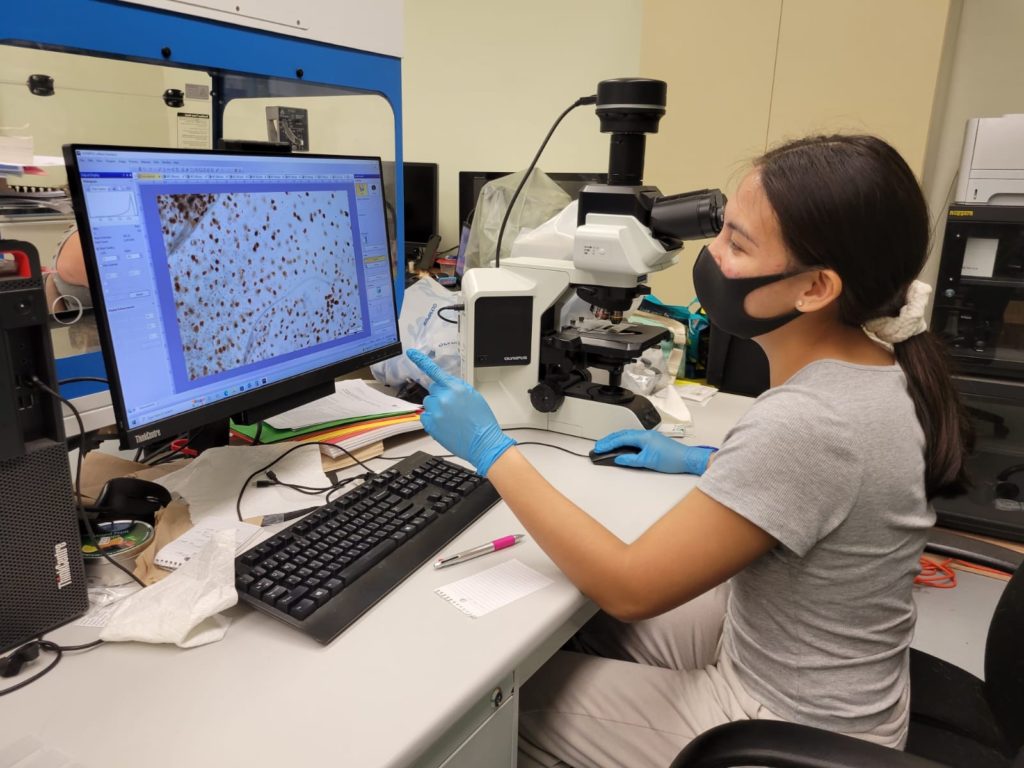
Photo courtesy of Colin Anthony, University of Guam
Very cool. Do you think you would still have this interest in science if you lived somewhere else?
Honestly, I feel like if I grew up somewhere else that I wouldn’t have as much of an interest in marine sciences because we have such close access to the ocean. We’re near the Marianas Trench, and the biodiversity within our waters is much higher than other places. I’m grateful that it’s easier for us to access these ecosystems and study them in the wild. My mentor is an example. He studies Cassiopea and corals in situ, so he has sites of study in the field, not just in a lab, that we would visit frequently.
Has anything about the SEAS program or your academic career surprised you?
It was actually at the National Diversity in STEM Conference. In the introductory meetings, the speaker mentioned how underrepresented some communities are and that it’s not so diverse at other conferences. I didn’t realize that, because it was my first one. Seeing how they incorporated culture into everything and wanted to include everyone, not just a specific group, made me feel very inspired. It was just surprising to realize how underrepresented we are, and it made me motivated to change that.
I’m glad to hear it was a good experience. How did your poster presentation go?
Before my presentation, I was nervous. I was panicking and trying to make a script for everything. Then, I realized that I went through this research process for months, so all this should be natural to me. I decided instead of making a script, why don’t I just trust myself? I’ll have my poster with me and then let it flow, just have a casual conversation with whomever I’m talking to and not think of it as pressure. The judges said I seemed very confident. I was proud of myself.
How have your SEAS mentors and peers helped support you?
I think it’s important to be honest as a beginning researcher. I’m thankful that my mentor was there to have active communication with me, to make sure I was all right and understood everything I was doing. With my peers, I wasn’t shy about telling them how I was struggling. That also brings out how they feel, and then we feel more connected through having to figure out how to overcome our challenges together. We made each other feel that we weren’t alone in the process. And the near-peer seminars that our SEAS hubs held were very helpful. They had us each talk about our research, how we could integrate with each other, and how they’re all connected in the environmental science field.
Is there any advice you would give to other students?
I would say to take advantage of research opportunities to help apply what you learn in the classroom to real-life situations. It helped me better understand where my interests lie and the purpose behind the subjects we learned in school. I gained more appreciation for those subjects instead of just thinking, ‘How am I going to apply this or where would this take me in the future?’ Another piece of advice is to have an outlet or mechanisms to de-stress when you feel overwhelmed or overworked.
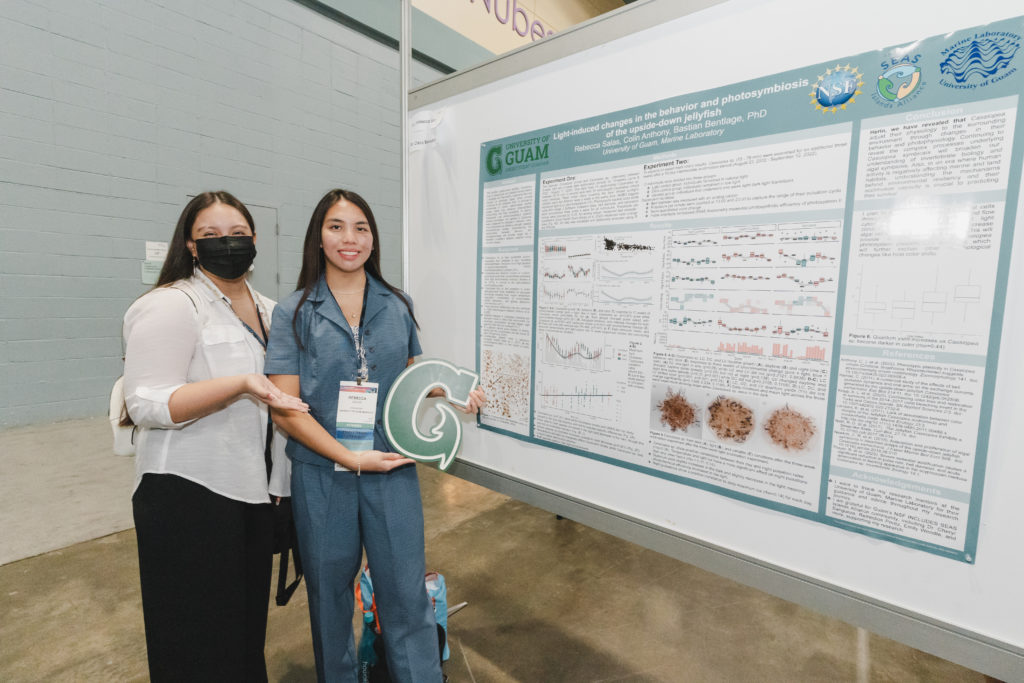
Photo courtesy of Matthew Miguel, University of Guam
How did you feel when you didn’t get the results you anticipated?
I started in January, went through multiple trials, and only ended up finding a final project in the summer. I was panicking a bit. I was like, ‘How are we going to make this work? Is this going to be finished in time?’ I did my experiment over 10 weeks, plus another three weeks, but I felt that the most difficult part was conjuring up all the experimental data, analyzing it, graphing it with software, and explaining it verbally and through writing. I was nervous about whether I would have enough time, but I trusted my mentor and stayed determined. That was how we were able to finish.
You mentioned earlier that you’re interested in other science fields. Do you know what you want to try next?
I really want to study environmental engineering or integrating business and environmental science. Maybe something dealing with water conservation and how I can build different mechanisms for that, including producing sustainable products and advertising better practices in society. I don’t have an exact career in mind for the future right now because I’m interested in so many things. I know I want to get into science and business—maybe consulting businesses on how they can improve their methods for using natural resources or environmental engineering.
What do you like to do outside of school?
Like I said, it’s good to find an outlet for stress. As a STEM major it can be very stressful, especially during exam week, so outside of school I’m a student athlete. I release all that stress through sports. I play beach volleyball and regular indoor volleyball. I’m planning to travel and play for the national team. I’m also interested in art. I like volunteering for coastal cleanups and just regular leisure activities.
Do you think you’ll stay in Guam after you graduate?
I’m interested in studying environments that aren’t on Guam, like mountainous areas. I really want to get national or international experience and then bring that back to Guam later in my career.
Interview by Ashley Goetz, science writer and digital specialist with Maryland Sea Grant.
